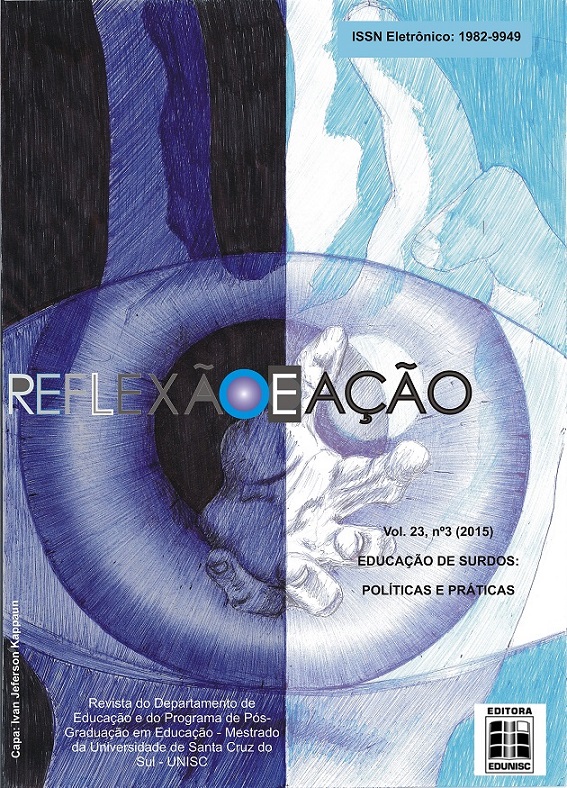THE ENGLISH TEACHING AS A SECOND LANGUAGE FOR DEAF: TEACHING STRATEGIES
DOI:
https://doi.org/10.17058/rea.v23i3.6033Keywords:
Portuguese for Deaf, Teaching Strategy, Bilingual ApproachAbstract
Historically the difficulties of deaf students in relation to reading and writing skills were attributed to some causes inherent to deafness, however, currently, it is known that these difficulties occur because of a lack of consideration during the process of teaching and learning, of the deaf language specificities. Thus, the vast majority of deaf people, young and old, had no schooling that had respected these specificities. Therefore, this study aims to describe and analyze pedagogical strategies for the teaching of written Portuguese as a second language, from the construction of knowledge in Libras, in workshops for graduated deaf students in the literacy levels of basic education. The activities of the workshops were documented by video recordings and record in field diaries. Based on the conceptual framework of cultural-historical approach, this study demonstrated the importance of the relationship between researchers and deaf participants offered by language, constituting a space for communication, training and development of individuals. The results indicated that the use of Libras as language of instruction in these areas is critical to the construction of concepts and acquisition of knowledge in reading and writing, as well as appropriated teaching and informed in pictorial resources favored dialogical exchange, facilitating the understanding for deaf people.Downloads
Downloads
Published
How to Cite
Issue
Section
License
The submission of originals to this journal implies on the transference, by the author(s), of the printed and digital publishing rights. The author´s rights to the published articles are the author´s, the journal has the rights over the first publication. The author(s) can only use the same results in other publications, indicating clearly that this journal was the original publisher. Since we are an open access journal, the free use of articles is permitted for educational and scientific applications, as long as they inform the source according with the CC-BY license from Creative Commons.


